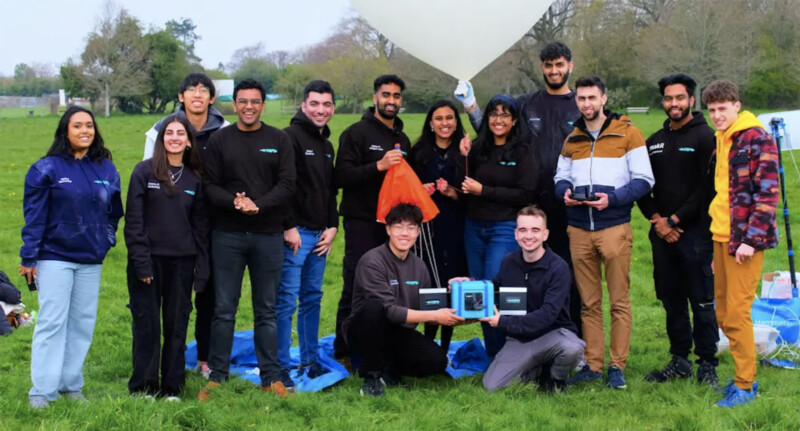Students Send Insta360 X3 Nearly 20 Miles High
![]()
Hot on the heels of Insta360 announcing the Go 3, a compact and enjoyable action camera, Insta360 has highlighted the work of Karman Space Program (KSP), a student-led team aiming to reach space using a reusable rocket. During the team’s work, it has been using Insta360 cameras to capture incredible and unique perspectives of Earth, including during a recent high-altitude balloon test, Project Eclipse.
f’
In an interview with KSP, Insta360 asked the students about the motivation behind the program. “The Karman Space Program is a student team with the primary objective of researching and developing space technologies to improve life on Earth. Currently, KSP is developing reusable rockets, intending to become the first student-led team to launch a reusable rocket past the Karman Line. It was founded by five engineering students at Imperial College London and supervised by five leading academics to create a thriving engineering and entrepreneurial ecosystem with the common goal of sustainable and accessible space travel,” the students explain.
So far, KSP has launched a rocket, Nebula, and the high-altitude balloon, Eclipse. Alongside Insta360 X3 cameras, Eclipse also carried avionics systems for testing and put KSP’s ground station live streaming infrastructure through its paces. The team is preparing to launch another test rocket, X-Calibur, and a dual-stage rocket, Orion.
While not a rocket, the Eclipse balloon is helping pave the way for the team’s planned reusable rocket program, which the students hope will usher in a new, greener era of space exploration.
“With Insta360 providing industry-leading 360 cameras, we decided it would be ideal to mount their cameras onto our payload to capture stunning footage of our planet, from a unique perspective. The footage turned out great — we’re able to get a full view of the horizon and reframe it as desired. When capturing the burst of the balloon, the 360 camera was extremely useful,” KSP tells Insta360.

The team says that the 360-degree cameras allowed them to capture footage of Eclipse’s ascent up to 16 miles (26 kilometers) of altitude. The cameras documented the apogee, the balloon rupture, and the opening of the parachute system. Further, the action cameras also capture footage suitable for viewing in a virtual reality (VR) headset.
“Their water resistance and wide operating temperatures allowed us to mount the cameras on the outside of the payload with no insulation, operating perfectly in humid conditions through clouds and -40 degrees Fahrenheit (-40 degrees Celsius) temperatures experienced at flight apogee,” KSP says of the Insta360 X3’s suitability for high-altitude recording.
KSP’s upcoming X-Calibur rocket launch will also be documented using Insta360 X3 cameras, including getting up close and personal with the launch. The team hopes to attach a camera to the rocket itself, but the students are still determining if the aerodynamics will permit the camera.
Insta360 supplies KSP with cameras thanks to Insta360’s Think Bold Fund. The fund supports creators and projects such as KSSP with cash support, cameras, production equipment, technical support, and more.
Image credits: Insta360 and Karman Space Program